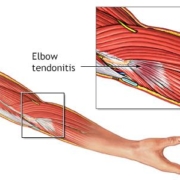5 Simple Strategies to Boost Your Desk Posture Today
In today’s fast-paced world, where many of us spend hours hunched over keyboards adn screens, maintaining good desk posture has never been more crucial. Poor posture can lead to discomfort, fatigue, and long-term health issues, but the good news is that making simple adjustments can have a profound impact on your well-being. In this listicle, we’ll explore 5 simple strategies to boost your desk posture today. From ergonomic tweaks to mindful habits, you’ll discover practical tips that can transform your workspace into a haven of comfort and productivity. Whether you’re working from home or in an office, these straightforward techniques will help you sit taller, feel better, and enhance your overall work experience. Let’s dive in and reclaim your posture!
1) Adjust Your Chair Height: Start by ensuring your chair is set to the right height. Your feet should rest flat on the ground, with your knees at a 90-degree angle. This simple adjustment can alleviate strain on your lower back and promote a more cozy seating position
To achieve a comfortable and ergonomic seating position, begin by adjusting your chair height. When seated, your feet should rest flat on the ground, ensuring that your knees form a perfect 90-degree angle. This alignment is crucial as it helps distribute your weight evenly and reduces needless pressure on your lower back. Remember, a chair that’s too high can lead to dangling feet, while a chair that’s too low can cause your knees to elevate uncomfortably, both of which can contribute to poor posture and discomfort over time.
Consider the following tips to fine-tune your chair height:
- Use a footrest: If your feet don’t touch the ground, a footrest can provide support and enhance stability.
- Check your desk height: Ensure your desk is compatible with your chair height; your elbows should be at a 90-degree angle when typing.
- test your posture: After adjusting, sit back and ensure your back is supported by the chair. Your shoulders should be relaxed, not hunched.
2) Position Your Monitor Correctly: Your computer monitor should be at eye level, about an arm’s length away. This helps prevent neck strain and encourages you to maintain a straight back. Use a monitor stand or stack some books if necessary to achieve the perfect height
To create a comfortable workspace,the height and distance of your monitor are crucial. Ideally, your screen should be positioned so that the top of the monitor is at or slightly below eye level.This arrangement allows your eyes to look slightly downward when viewing the center of the screen, which reduces strain on your neck and shoulders. If your monitor is too low,you might find yourself leaning forward or tilting your head,leading to discomfort and potential long-term issues. Consider using a monitor stand or even a stack of sturdy books to elevate your screen to the perfect height.
Additionally, maintaining an appropriate distance from your monitor is essential for optimal viewing. Aim for about an arm’s length away, which typically ranges from 20 to 30 inches. This distance helps reduce eye strain and allows you to maintain a relaxed posture. To ensure you’re not squinting or leaning in, adjust the brightness and contrast settings on your screen to suit your surroundings.Here’s a fast checklist to help you set up your monitor correctly:
- Monitor height: Top of the screen at or slightly below eye level
- Distance: About an arm’s length away
- eye level: Center of the screen should be slightly below your line of sight
- Adjust settings: Optimize brightness and contrast for comfort
3) Utilize a Supportive Lumbar Pillow: Investing in a lumbar support pillow can work wonders for your desk posture. Place it behind your lower back to maintain the natural curve of your spine, providing extra support during long hours of sitting
one of the simplest yet most effective ways to enhance your desk posture is by incorporating a lumbar support pillow into your workspace. By positioning this cushion behind your lower back,you create a barrier that encourages your spine to maintain its natural curve.This not only alleviates pressure on your lumbar region but also promotes a more upright sitting position, reducing the risk of slouching during those long hours of work. The right lumbar pillow can be a game-changer, transforming your chair into a comfort zone that supports your body’s alignment.
When selecting a lumbar support pillow, consider the following features to ensure you make the best choice for your needs:
- Material: Look for breathable fabrics that provide both comfort and support.
- Adjustability: Some pillows come with adjustable straps to secure them in place, allowing for a customized fit.
- Shape: A contoured design can offer targeted support for your lower back.
By investing in a high-quality lumbar support pillow, you not only enhance your comfort but also promote better posture habits that can have lasting benefits for your overall health.
4) Practice the 20-20-20 Rule: To combat eye strain and encourage movement, follow the 20-20-20 rule. every 20 minutes, take a 20-second break to look at something 20 feet away. This not only helps your eyes but also serves as a reminder to adjust your posture and stretch
In our digital age, where screens dominate our daily tasks, it’s crucial to give our eyes a break. The 20-20-20 rule is a simple yet effective strategy to combat eye strain. By taking a moment every 20 minutes to look at something 20 feet away for at least 20 seconds, you allow your eyes to relax and refocus.This brief pause not only alleviates discomfort but also serves as a gentle reminder to check in on your posture. You might find yourself straightening up or adjusting your chair, making this practice a dual-purpose solution for both eye health and ergonomic alignment.
Moreover, incorporating this rule into your routine can encourage movement throughout your workday. During your 20-second break, consider standing up, stretching your arms and legs, or even taking a short walk around your workspace. Here are some quick stretches you can do during your breaks:
- Neck Stretch: Tilt your head to one side and hold for a few seconds.
- Shoulder Rolls: Roll your shoulders forward and backward to release tension.
- Wrist Stretch: Extend one arm and gently pull back on your fingers with the other hand.
5) Incorporate Desk Stretches: Take a few moments throughout the day to perform simple desk stretches. Reach your arms overhead, twist gently in your chair, or stretch your neck side to side. These movements can relieve tension and keep your body energized while working
Incorporating desk stretches into your daily routine can be a game-changer for your posture and overall well-being. Taking just a few moments to perform these simple movements can significantly alleviate tension that builds up from prolonged sitting. Consider the following stretches to integrate into your workday:
- Overhead Reach: Stand up and stretch your arms overhead, interlocking your fingers. Lean slightly to one side, then the other, to elongate your sides.
- Seated Twist: While seated, place your right hand on the back of your chair and gently twist your torso to the right. Hold for a few breaths,then switch sides.
- Neck Stretch: Drop your right ear to your right shoulder, feeling the stretch along your left neck. Hold for a few seconds and switch sides.
To help you remember these stretches,consider creating a simple schedule. Here’s a quick reference table for your desk stretching routine:
| Time of Day | stretch | Duration |
|---|---|---|
| 9:30 AM | Overhead Reach | 30 seconds |
| 11:00 AM | Seated Twist | 30 seconds per side |
| 2:00 PM | Neck Stretch | 15 seconds per side |
By scheduling these stretches into your workday, you’ll not only improve your posture but also increase your energy and focus. Remember, a few moments of movement can make a significant difference in how you feel throughout the day.
Final Thoughts
As you embark on your journey to better desk posture, remember that small changes can lead to significant improvements in your overall well-being. By incorporating these five simple strategies into your daily routine, you not only enhance your comfort but also promote long-term health benefits. Whether it’s adjusting your chair, taking regular breaks, or being mindful of your screen height, each step contributes to a more ergonomic workspace. So, take a moment to assess your setup and implement these tips today. Your body will thank you, and you may find that improved posture can lead to increased focus and productivity. Here’s to a healthier, more comfortable work experience!










Leave a Reply
Want to join the discussion?Feel free to contribute!